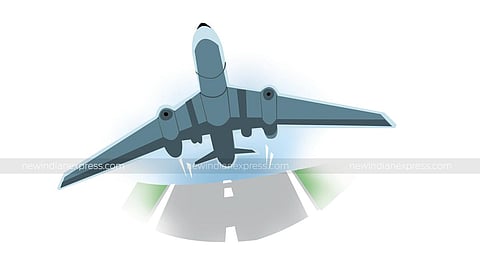

The ongoing July-September quarter is likely to be a not-so-happy one for airline companies in India due to the dual impact of falling airfares and rising fuel costs.
According to a report by JM Financial, the airfares are down nearly 10% so far this quarter compared to the preceding, Apr-Jun period.
To make things worse for the aviation sector, the recent increase in crude oil prices is likely to result in an increase of 6% in Aviation Turbine Fuel (ATF) prices during the same period.
“Further, the recent rally in crude price is likely to result in higher ATF prices,” noted analysts from JM Financial.
Airline companies such as InterGlobe Aviation and SpiceJet have been recovering from their COVID disruptions in recent quarters.
To address the fuel price issue, the Ministry of Civil Aviation is reported to be working with states to reduce the value-added tax (VAT) applicable on ATF; VAT rates at most major airports in India are still quite high.
However, there is little the government can do to revive demand.
The traffic for August 2023 marginally increased by 3% month-on-month to 12.4 million.
“With an increasing number of aircraft in the air, the passenger load factor for the quarter is also expected to decline from the first quarter average of 90.3% with spot PLF’s averaging nearly 85%,” added the analysts.
A high load factor indicates that an airline has sold most of its available seats and is preferred over a low load factor.
Indeed, the last reported domestic passenger load factor for July 2023 witnessed a month-on-month decline across all airlines with Indigo registering 83.7% while Air India’s PLF stood at 84.2%.
Other Factors
Besides reduced demand and high fuel costs, the airlines are also facing other drag on their performance, such as technical problems. Go-first’s revival has slowed down post Delhi High Court’s order to allow aircraft leasing
companies to access the aircraft leased to Go First for inspections and maintenance work.
In May this year, Go Air’s budget owners- the Wadia group filed for voluntary insolvency resolution before the National Court of Law Tribunal (NCLT) sending shockwaves in the entire airline industry.
The NCLT has now granted Go First’s resolution professional a week to file a reply to
applications by aircraft lessor DAE (SY22) 13 Ireland further slowing the revival process.
Go First was plagued by a peculiar problem -- the purported failure of the jet engine manufacturer, Pratt & Whitney, USA, to supply engines/spares for its aircraft that grounded nearly 40 percent of the fleet for several months before it was compelled to totally suspend operations from the first week of May 2023. Indian airlines’ engine woes continue to deepen with phased inspection of engines by P&W.
Meanwhile, Indigo which is also facing engine-related issues is set to lease 22 aircraft. The airline is looking to induct these aircraft from the secondary lease markets as it faces the grounding of several aircraft due to P&W engine issues.
P&W will inspect 1,200 engines with 200 engines expected by mid-September.
The engine manufacturer will likely recall 600-700 engines from the current year 2023- 2026.
As of now, Indigo’s 45 aircraft are grounded.
The airline has hit further turbulence as Indigo’s ex-promoter Rakesh Gangwal's recent 5% stake sale in the company via a block deal is in line with his strategy to reduce stake in the company over the coming years.
Gangwal’s stake post the recent sale stands at 25%. Impending stake sale by Gangwal besides slowing earnings trajectory in the second quarter is likely to weigh on Indigo’s stock price.
The recent CCI approval for the Air India – Vistara merger will ensure the airline becomes the
number two airlines in the domestic space, posing a major setback to the airline.
The potential merger may not only provide economies of scale to both Vistara and Air India but also open up access to dozens of new slots globally for Singapore Airlines on the one hand and help Tata Sons consolidate its aviation business balance sheets on the other. Air India and Vistara are expected to retain their individual brand identities post-merger, though eventually, only one brand may remain.